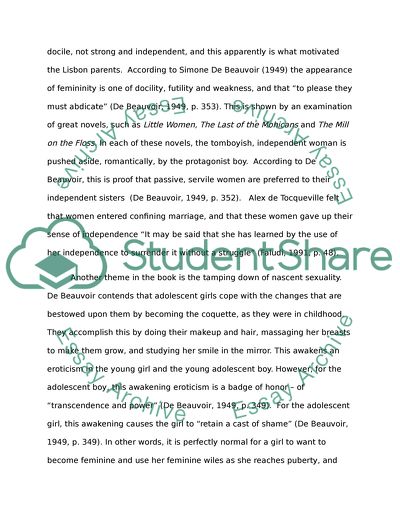Cite this document
(“The Virgin Suicides by Jeffrey Eugenides Essay Example | Topics and Well Written Essays - 2000 words”, n.d.)
Retrieved from https://studentshare.org/environmental-studies/1417712-the-virgin-suicides-by-jeffrey-eugenides
Retrieved from https://studentshare.org/environmental-studies/1417712-the-virgin-suicides-by-jeffrey-eugenides
(The Virgin Suicides by Jeffrey Eugenides Essay Example | Topics and Well Written Essays - 2000 Words)
https://studentshare.org/environmental-studies/1417712-the-virgin-suicides-by-jeffrey-eugenides.
https://studentshare.org/environmental-studies/1417712-the-virgin-suicides-by-jeffrey-eugenides.
“The Virgin Suicides by Jeffrey Eugenides Essay Example | Topics and Well Written Essays - 2000 Words”, n.d. https://studentshare.org/environmental-studies/1417712-the-virgin-suicides-by-jeffrey-eugenides.


